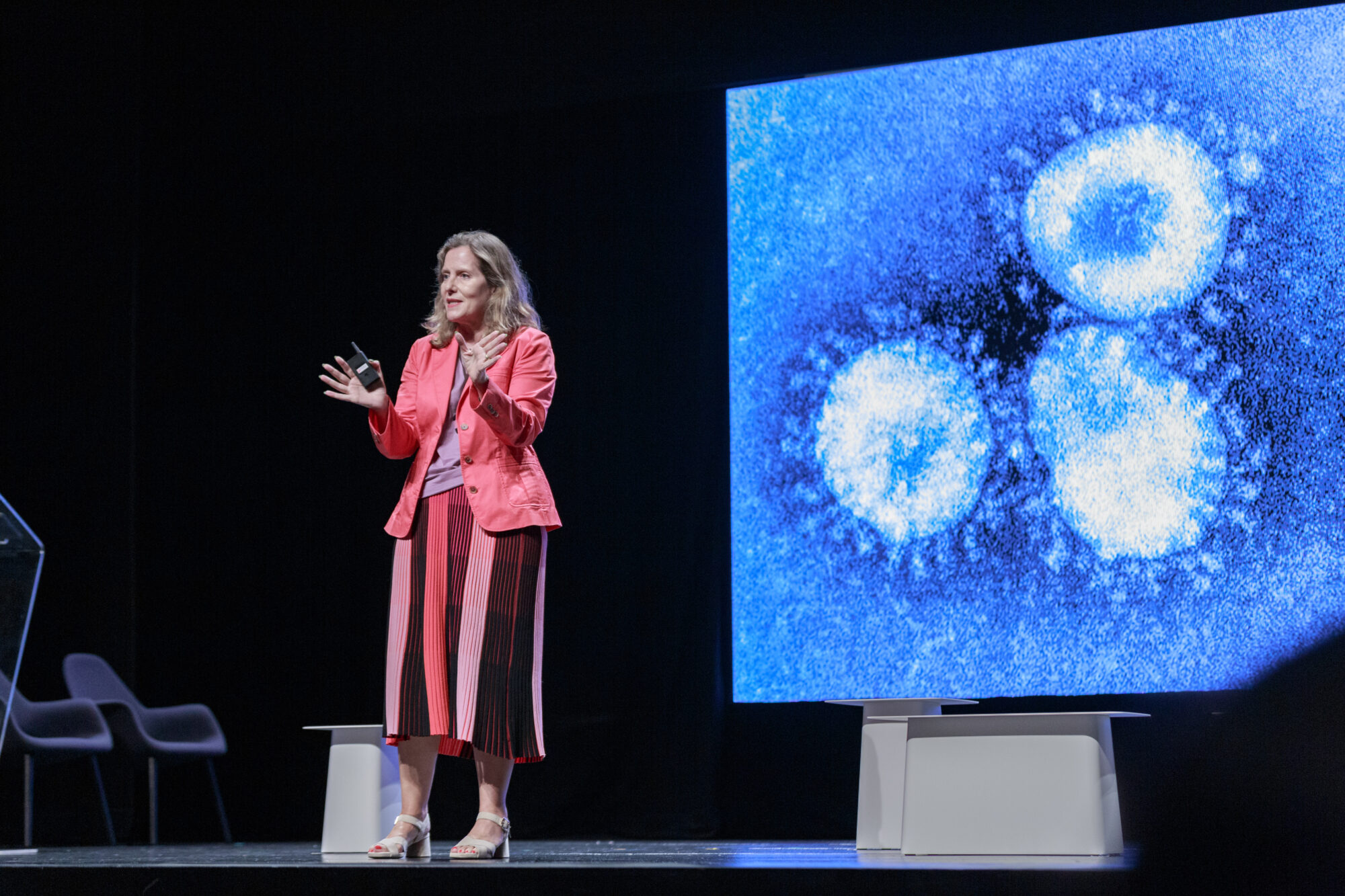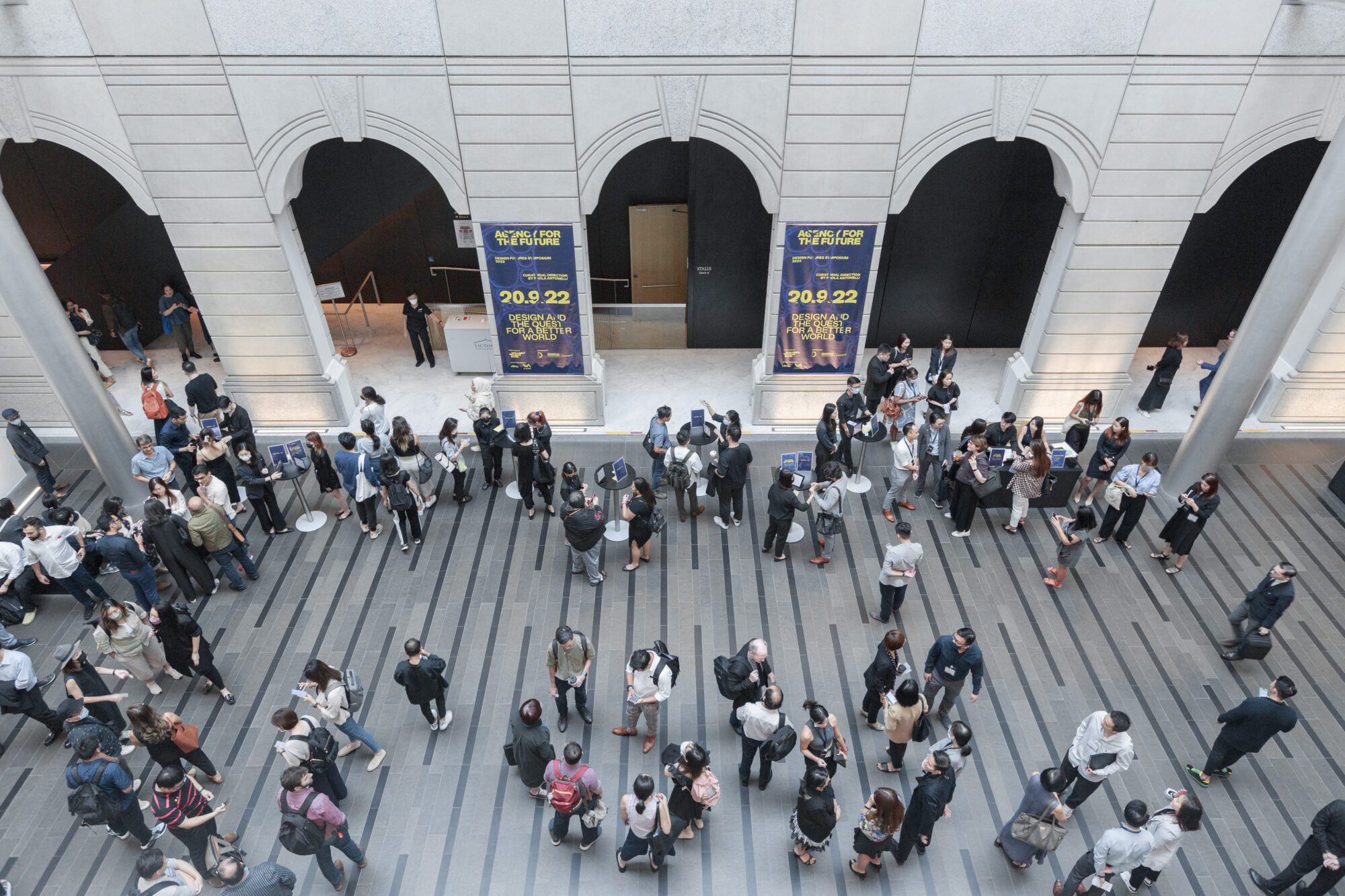Navigating the future through design
Do you feel it? Do you feel the point of inflection we’ve been encountering in the early 2020s?
From the pandemic’s utter disruption of business as usual, to the undeniable havoc inflicted by the changing climate, to untrodden technological paths and geopolitical forces of change – it’s fair to say that in addition to the complexity that underpins the twenty-first century, a character of fragility defines our new normal. And it demands our response.
If ever there was a critical moment to contemplate the future and how we should shape it, this has got to be it.
For us at the DesignSingapore Council, that means asking not only where we are heading, but also how design can optimise the journey and destination. What can design do as an active force to build a better future? What values should we apply when using design to shape the future? And what does design itself need to be in that future?
Design is an Enzyme for Progress
The sold-out Design Futures Symposium, held on 20 September at Victoria Theatre during Singapore Design Week 2022, was our time to dive into the shifting global design current with an expert navigator as Curatorial Director.
This first edition of the symposium was akin to a health check where we took the pulse of design in Singapore and abroad through a futures lens. We reviewed a broad range of design contexts, and everywhere we looked, we found an impact-driven sense of mission.
We expected this, not only because of the gravity of the challenges we face globally, but also because from the outset, a key aim for internationally respected design curator Paola Antonelli (MoMA) was to push the message that design is an “enzyme for progress”. Design, suggests Paola, is the one discipline that can straddle the complex and interconnected issues we will face in the near and far future, and visualise the systems and cross-disciplinary forces they straddle.
Designers, after all, are natural collaborators who have been trained to look upon things from many angles.
Through their work and their spirit, all our speakers showed how they have energetically taken the baton to fulfil design’s potential to make life better. In their presentations and discussions, we heard how they are pushing themselves, their teams, their clients and their audiences toward necessary new destinations.
“Design is one of the most powerful tools we have to strategise and build a better future, not only for all humans, but also for other species – and for the planet.” Paola Antonelli
So, what were some of their focal areas? They ranged from ‘generative justice’ models for production (Dr Mae-ling Lokko), to buildings that encourage emotional engagement, deeper connection and longevity (Thomas Heatherwick), to inclusive creative interactions with new technologies (Michela Magas), to a systems-based approach to urban planning and architecture (Wong Mun Summ and Dr Nirmal Kishnani), to a regenerative design mindset (Sarah Ichioka).
With such visions and approaches on the table, the pathways to the future can be bright.
“Singapore, as a world-class example of strategic urban design, is in the potentially crucial position to challenge and imbue the wider culture of design and development with truly regenerative mindsets and methods.” Sarah Mineko Ichioka
A Petri Dish for Design
The symposium was also an opportunity to think about Singapore’s track record of forging its own future, and how design can take the driver’s seat in the process of modelling, prototyping, testing and perfecting solutions at a national level.
As Prime Minister Lee Hsien Loong said in 2018, “Singapore is a nation by design. Nothing we have today is natural, or happened by itself. Somebody thought about it, made it happen.” Design has been a critical thread in our national development since independence, even if it was not always recognised as such at the time.
We were privileged to have veteran civil servant, now professor, Lim Siong Guan (former Principal Private Secretary to Lee Kuan Yew) speaking about the notion of Singapore as a design in itself – a complex system and a city of prototypes. He emphasised the value of conversations, experimentation and a long-term view as the nation continues to chart its path.
“We need to be a lot more willing to create new possibilities and new practices, as opposed to reacting to things.” Prof. Lim Siong Guan
Where is that path taking us, in design terms? In recent years, the world has looked to Singapore as a petri dish for design experiments with urban density and greenery, and now new design territories are being carved out in areas such as resilient food systems, the ageing population, and digital infrastructure.
The symposium gave real examples from our home territory, such as design for a more circular urban food system using bioconversion of food waste (Prof. Stephen Cairns); urban design for the healthy integration of all age demographics (Dr Emi Kiyota); the potential for Singapore and Asia to contribute to the direction of the metaverse (Duleesha Kulasooriya); and even policy design that’s qualitative as well as quantitative in response to complex realities (Dr Aaron Maniam).
The Agency for Change
As every one of our speakers demonstrated, design’s potential goes far beyond the creation of “cute chairs” – a narrow and stubbornly persistent perception of design that Paola often laments. But we have to choose to apply it with a curious mind and a broad consideration of impact.
Paola summed up the Design Futures Symposium with four key learning points:
- There is (or can and should be) a real closeness between policy makers and designers;
- We are in a systemic world, and design can help us tackle the complexity that underpins it;
- It is imperative to think long term; and
- We really need to think about care as a value – care for all people and the planet.
Across everything we heard was the ‘agency’ to act – be it at the institutional or individual level. Our speakers showed us how design can be a positive force in shaping a better world at the nation-building level, but there is also the potential for each of us to recognise the agency that we hold as individuals to use design to push beyond business as usual for a future we not only want, but need.
The future of design resides not only in new technologies and innovations, but also in a return to core principles that provide common sense foundations for wellbeing and sustainability.
Whether you are a designer, a commissioner of design, or a consumer of design, now is the time to ask yourself: What do I care about, and what is the future I want to design?
Catch up on all the presentations and discussions from the Design Futures Symposium 2022 by watching our video series.
Stay tuned for the next instalment of the Design Futures Pillar at SDW 2023.
The Design Futures Symposium 2022, titled ‘Agency for the Future: Design and the Quest for a Better World’, was organised by the DesignSingapore Council and SUTD DesignZ. The event was held on Tuesday 20 September 2022 at Victoria Theatre, Singapore. Photography by Abdul Hafiz. Article by Narelle Yabuka.








